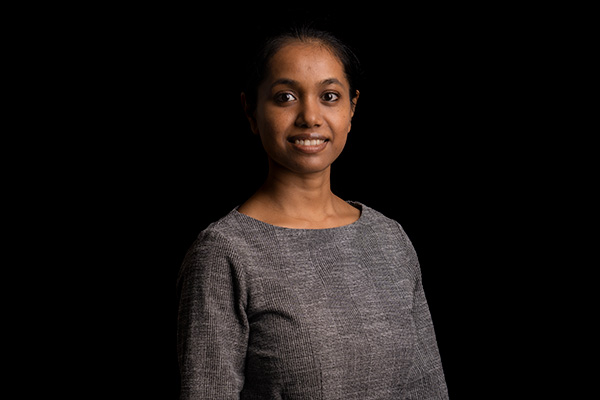Ajanta Barh
Research leader

Project title
Mid-infrared dual-comb from a single free-running laser for precise greenhouse gas monitoring
What is your project about?
My project is based on a novel optical method enabling ultra-sensitive detection of molecules in the air. For example, the important gas molecules which are accountable for global warming and climate change are only present in trace amounts in our atmosphere. Detection and monitoring their concentration changes is crucial for accurate climate modelling. Traditional ways to achieve this are based either on theoretical computation and prediction or on complex and time-consuming detection methods. This Sapere Aude project will contribute towards a solution to rapidly identify and quantify the concentration of these molecules. To achieve this goal, I will establish a new class of mid-infrared ultrafast lasers and detection scheme. In addition to practical implications, the research outcomes will fundamentally advance ultrafast laser science, and impact other research areas like, disease diagnostics, food control and strong-field physics.
How did you become interested in your particular field of research?
My interest in laser science stems from the university days. As a physics student, I was fascinated with photons of light, as they do not interact with themselves but give us our vision. Since my PhD, I became particularly interested in the mid-infrared light, which is not visible to our eyes but can strongly affect all varieties of molecules. This is intriguing, since if we can develop proper ‘tools’ (mid-infrared light sources and detection methods), then we can see, study and control all these molecules and even more complex materials made of them. I am excited to deep-dive into such research in this very project.
What are the scientific challenges and perspectives in your project?
Developing ultrafast lasers outside the visible and near-infrared spectral ranges is challenging. The reason being lack of proper opto-electronics materials and devices suitable for ‘handling’ mid-infrared light. Establishing stable operation of these lasers is also challenging but required for sensitive detection. Here, I will investigate and apply novel material systems (bulk and thin-layered semiconductors) and innovative laser architecture to address these scientific and technological challenges, and establish new class of lasers not previously available.
What is your estimate of the impact, which your project may have to society in the long term?
We are now in a crucial time when our success in research of climate change, disease prevention, healthcare and food quality control are deciding the future of global civilization. The means for precise molecular detection, developed in this project, can revolutionize these fields of research by providing outstanding sensitivity, accuracy and speed of measurements, all at the same time. The robust nature of our solution is suitable for on-field use and remote operation, and thus it can be integrated into air-borne or even satellite devices for environmental monitoring. On a fundamental level, the precise time-frequency nature of our mid-infrared laser will be of high interest to the frequency metrology and strong-field physics communities as well.
Which impact do you expect the Sapere Aude programme will have on your career as a researcher?
The prestigious Sapere Aude grant is an honor and a sign of recognition for all the time and efforts I devoted to my research career. It gifts me the opportunity to establish myself as an independent research leader in the field of Optics & Photonics, and to create my own research group. The grant supports my aspiration to establish a long sought-after light source enabling rapid and ultra-sensitive molecular detection. This field is exciting and innovative, and has a huge potential for growth and sustainable research. Furthermore, the grant will allow me to attract and cultivate young talents, establish long-term collaboration with world-leading experts, and secure future research funding. I always wanted to be a teacher, and this grant will allow me to mentor and support young minds and the next generation of scientists.
Background and personal life
I was born and raised in a small town in India, surrounded by colorful and lively tropical nature, close to the mighty Bay of Bengal. In this environment I developed my love for monsoon rain, fish & rice, literature, music, nature/bird photography, and the eagerness to preserve all of these. My subsequent passion for Physics brought me to different cities and countries, where I met my dearest friends and supportive colleagues. Since my PhD, I lived and worked in India, UK, Denmark, and now in Switzerland. The European culture resonates with me. I am looking forward to return to Denmark again, together with my Ukrainian husband, whom I met in a scientific conference. Now we are enjoying time with our 5-month-old baby boy, and when he allows us, we also enjoy hiking, gardening and cooking together.
View all research leaders here
Research institution
Technical University of Denmark
Research field
Laser physics
City of your current residence
Zurich
High school
Mahishadal Raj High School, West Bengal, India
